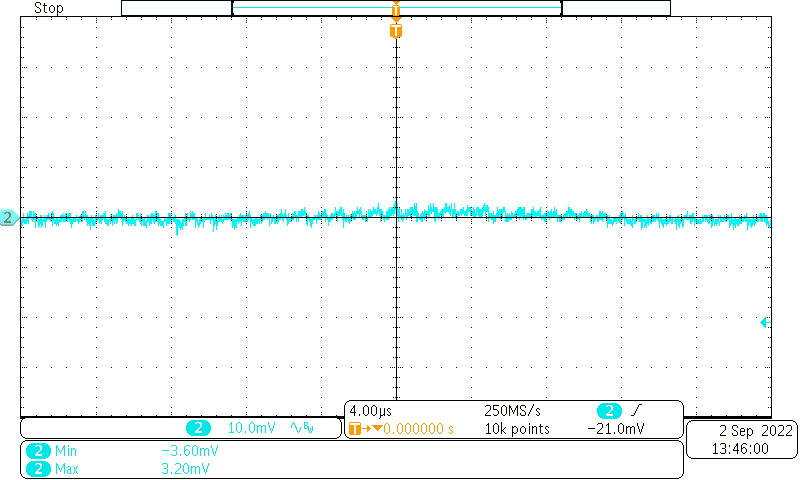TIDT382 February 2024
- 1
- Description
- Features
- Applications
- 1Test Prerequisites
- 2Testing and Results
- 3Waveforms
- 4Summary
- 5References
3.2.2 SN6507-Q1 Output Voltage Ripple
The SN6507-Q1 output voltage ripple waveform is shown in the following figure.

Channel 2: AC coupled output
voltage ripple at 15 VOUT and 100mA load current, bandwidth limited
(20MHz), [scale: 10mV/div, 4.0μs/div]. The output voltage ripple was measured at
output capacitor C34.
Figure 3-5 SN6507-Q1 Output Voltage
Ripple